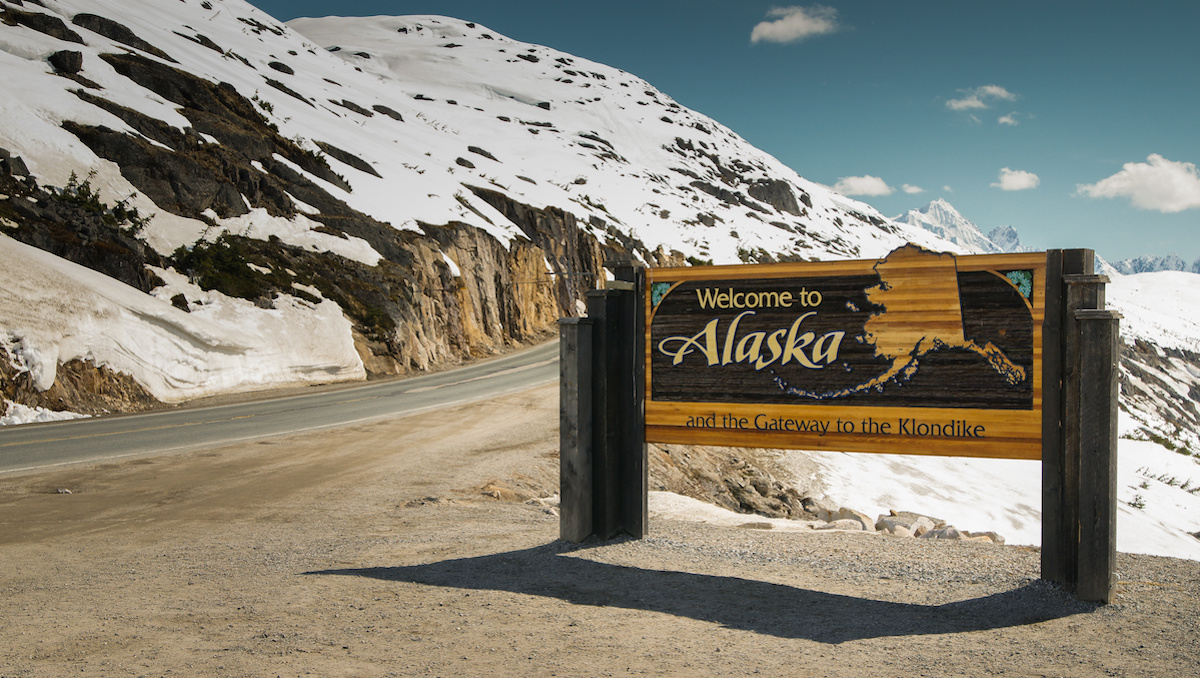It’s no secret that we here at America Is Weird get a kick out of anomalies. We also like a good tale of geography. With that in mind, here is a small sampling of American geographic anomalies.
This list (you, the reader, will know soon if this actually becomes a list or not) starts and ends with Alaska. Alaska is anomalous for countless reasons, not least of which is its near-incomprehensible size.
How Big Is Alaska?
Alaska is about the size of Spain, Germany, and France combined. It’s more than twice the size of Texas (which is big enough that your most direct east-to-west drive across the state takes a minimum of 12 hours).
Alaska is so big that if you take just the federally protected land within the state (about 157,000,000 acres), it would be the third-largest state in the country – trailing only Texas and, of course, the remaining parts of Alaska, which would still be 80% larger than Texas.
So it’s no surprise that Alaska holds the marvelous distinction of being the northernmost and westernmost point in the 50 states. Actually, that’s not fair. It might be a surprise that Alaska is further west on a globe than Hawaii. But weird or not, it’s true.
If we want to look at the southernmost point in the United States, a reasonable guess would be Key West, off of Florida, but that would be incorrect. It’s actually Alaska.
Just kidding. The southernmost point in the 50 states (a distinction that limits overseas territories like Guam and the Mariana Islands) is on the big island of Hawaii. It is called, believe it or not, South Point. Of course, it actually has a traditional Hawaiian name – Ka Lae. The other thing worth remembering about it is that there is a park located at South Point: This is South Point Complex, part of the National Park Service. The biggest and arguably best claim to fame of this park is that you can jump off the cliffs – 25-35 feet down – into the clearest water you’ve ever seen in your life, and then scramble up the sketchiest ladder you’ve ever climbed in your life to get back to relative safety.
(Note: If you’ve been on a sketchier ladder, that’s a you problem. This author has jumped a couple of times and climbed back up once, opting instead to brave the waves against a rocky shoreline 200 feet away to climb up the second time. God knows how long that ladder has been there, but at a certain point it will break. I don’t intend to be on it when it does.)
If one were to peruse the Wikipedia page for Extreme Points in the United States, a lot of unremarkable sites come up, of course. There are the tallest mountains, lowest elevations for inhabited cities, and the geographic centers for any number of American slices (contiguous 48 states, all 50 states, North America, etc.). But once again, after teasing it out for the last few paragraphs, our attention should return to Alaska.
Alaska holds the American distinction of being the farthest distance to civilization as well. There is an area on the Ipnavik River in northwest Alaska that is farther from habitation than anywhere else in the country. It is approximately 120 miles from the nearest sign of life. For comparison, the northern suburbs of Los Angeles are about 120 miles from San Diego and somewhere between five and 15 million people live in that area. Only 733,000 people live in all of Alaska.
Okay. Time for one more, since I’ve been burying it this whole time in an effort to make the kicker extra fun: In addition to the northernmost and westernmost points in the United States, Alaska features the EASTERNMOST point as well. How bizarre is that? Alaska is so big and in such a goofy place on the globe that it straddles the 180th meridian, meaning there are two Alaskan islands that are, technically speaking, in different hemispheres.
If you know your GPS coordinates, Semisopochnoi Island sits at 179 degrees, 46’23” east, a mere nine miles from the 180th meridian. Its counterpoint across the Amchitka Pass is a series of islands known as the Delarof Islands, several of which are part of the Alaska Maritime National Wildlife Refuge.
So there you have it: Alaska is the most anomalous of anomalies. Alaska is so big and weird that it is, incredibly, the easternmost, westernmost, and northernmost point in the United States.
